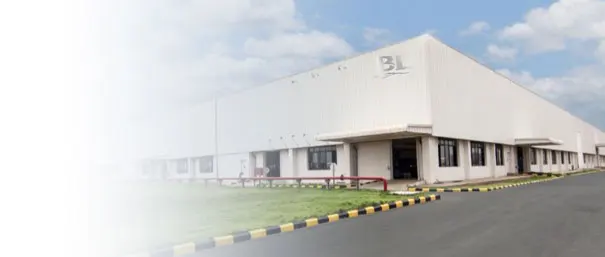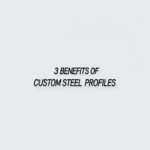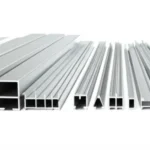In the dynamic landscape of modern architecture, facades are no longer mere envelopes but active, integral components that define a building’s identity, performance, and interaction with its environment. Among the innovative materials shaping this evolution, architectural perforated stainless steel sheets stand out as a versatile and visually striking solution. These sheets combine the inherent strength and durability of stainless steel with the artistic freedom offered by various perforation patterns, creating surfaces that are both functional and profoundly aesthetic. They empower architects to craft facades that play with light, shadow, and transparency, ushering in a new era of design possibilities for urban landscapes worldwide.


The Intrinsic Appeal of Perforated Stainless Steel in Facade Design
The growing adoption of perforated stainless steel in contemporary architecture can be attributed to a confluence of aesthetic and performance advantages. Its unique characteristics allow architects to achieve sophisticated design objectives while addressing critical functional requirements.
Aesthetic Versatility and Dynamic Visuals
One of the primary drivers behind its popularity is its unparalleled aesthetic flexibility. Perforated stainless steel can be manufactured with an infinite array of patterns—from simple geometric shapes like circles and squares to complex abstract designs and even custom motifs. These perforations transform a solid surface into a translucent membrane, allowing light to filter through in captivating ways. The interplay of light and shadow changes throughout the day, giving the facade a dynamic, ever-evolving appearance. Furthermore, various finishing options, including brushed, polished, mirror, and even colored PVD coatings, enhance its visual impact, enabling architects to integrate the material seamlessly into diverse design palettes.
Unrivaled Durability and Sustainability
Stainless steel is renowned for its exceptional resistance to corrosion, rust, and extreme weather conditions, making it an ideal choice for exterior applications. This inherent durability ensures that facades maintain their structural integrity and aesthetic appeal for decades with minimal maintenance, significantly reducing lifecycle costs. Beyond its longevity, stainless steel is also a highly sustainable material. It is 100% recyclable, and a significant portion of new stainless steel production comes from recycled content, contributing positively to green building certifications and reducing environmental impact. Our commitment at BaoLi Iron & Steel Co.,Ltd, as a leading stainless steel manufacturer, ensures that our products meet the highest quality standards, perfectly suited for such demanding architectural applications.
Functional Benefits: Performance Beyond Aesthetics
The perforations are not merely decorative; they serve critical functional purposes that enhance building performance.
- Solar Shading: The controlled openings can significantly reduce solar heat gain, minimizing the need for air conditioning and lowering energy consumption. This contributes to better indoor thermal comfort and reduced operational costs.
- Ventilation: Perforated panels facilitate natural ventilation, promoting air circulation within the building while protecting interiors from rain and wind.
- Privacy and Views: They can provide a degree of privacy from the outside while maintaining outward views from within, creating a nuanced visual barrier.
- Acoustic Performance: When combined with appropriate backing materials, perforated panels can contribute to sound absorption, reducing noise pollution in urban environments.
- Wind Load Reduction: The open area of perforations can help mitigate wind pressure on the facade, potentially simplifying structural requirements.
Design Innovations and Customization Potential
The true innovation in architectural perforated stainless steel lies in its incredible adaptability and the extensive customization options available. Architects are no longer limited to standard off-the-shelf solutions but can collaborate with manufacturers to bring unique visions to life.
Advanced Perforation Techniques
Modern manufacturing techniques, including advanced CNC punching, laser cutting, and etching, allow for extreme precision and complexity in pattern creation. This enables the reproduction of intricate graphics, images, or branding elements directly onto the facade. The size, shape, and density of perforations can be varied across a single panel to create gradients, optical illusions, or even kinetic effects as viewers move past the building.
Formability and Three-Dimensional Applications
Stainless steel sheets can be bent, curved, and folded after perforation, allowing for the creation of complex three-dimensional forms. This opens up possibilities for sculptural facades, artistic installations, and seamless integration with curved building envelopes. The ability to manipulate the material into diverse shapes allows architects to break away from traditional flat surfaces, adding depth and intrigue to building exteriors. At BaoLi Iron & Steel, we understand the importance of bespoke solutions. As a China-based leading galvanized steel manufacturer and supplier of various other steel types, we specialize in providing customized dimensions, specifications, and performance characteristics to meet the precise needs of even the most ambitious architectural projects.
Applications Across Diverse Architectural Typologies
The versatility of perforated stainless steel makes it suitable for a wide range of building types, from grand commercial complexes to intimate residential designs.
Commercial and Public Buildings
In commercial architecture, perforated stainless steel facades are frequently used for office towers, retail centers, and convention halls. They help create a striking visual identity, control daylighting for comfortable interior environments, and offer opportunities for integrated signage or lighting features. For public buildings like museums, cultural centers, and transportation hubs, these facades can evoke a sense of lightness, sophistication, and public accessibility while fulfilling performance requirements.
Residential and Hospitality Projects
In residential projects, perforated stainless steel can be employed for balconies, sunscreens, privacy screens, or entire facade overlays. It allows residents to enjoy outward views while maintaining a level of seclusion. In hotels and resorts, it contributes to a luxurious and modern aesthetic, often seen in grand entrances, lobby areas, or external decorative elements.
Renovation and Retrofitting
Perforated stainless steel sheets are also an excellent choice for revitalizing existing structures. They can be installed as an outer skin over older facades, improving both the aesthetic appeal and the energy performance of the building without extensive demolition. This makes them a cost-effective and sustainable solution for urban renewal projects.
Engineering and Fabrication Considerations
Successful integration of perforated stainless steel facades requires careful consideration of engineering and fabrication aspects. Material selection, particularly the grade of stainless steel (e.g., 304 for general use, 316 for enhanced corrosion resistance in marine environments), is crucial. The percentage of open area in the perforation pattern impacts structural integrity, light transmission, and wind resistance. Close collaboration between architects, engineers, and fabricators from the early design stages is essential to ensure optimal performance and aesthetic realization. Our professional team at BaoLi Iron & Steel provides comprehensive technical support, guiding clients through steel selection and application to achieve “100% customer satisfaction” with our high-standard products, whether it’s carbon steel or any other steel product.
The Future of Facades: Sustainability and Innovation
As the architectural world increasingly prioritizes sustainability and smart building technologies, perforated stainless steel is poised to play an even more significant role. Its recyclability and contribution to energy efficiency align perfectly with green building initiatives. Future innovations may see these facades integrating with smart sensors, adaptive lighting systems, or even photovoltaic cells, allowing them to dynamically respond to environmental changes and generate energy. The ability to combine aesthetic sophistication with advanced functional capabilities positions perforated stainless steel at the forefront of facade design evolution.
Conclusion
Architectural perforated stainless steel sheets offer an extraordinary blend of artistic expression and robust performance. They are transforming modern facades from static surfaces into dynamic, interactive skins that optimize building performance, enhance occupant comfort, and leave a lasting visual impression. Their durability, aesthetic versatility, and functional benefits make them an indispensable material for architects pushing the boundaries of contemporary design. As designers continue to explore new forms and functionalities, the innovative applications of perforated stainless steel will undoubtedly continue to shape the skylines of our cities, creating structures that are not only beautiful but also intelligent and sustainable.




